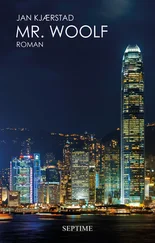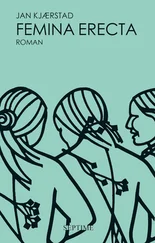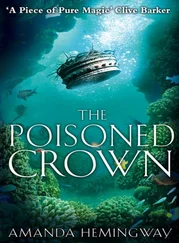A photographer from the daily newspaper Dagbladet , Johan Brun, took the blame. At the selfsame moment that Hjallis’s skate came down onto the silver paper he had taken a picture, using two flashes, one of which happened to be fixed to a bar set close to the bend. Even Hjallis was sure that it must have been the flashes that had blinded him and caused him to lose his balance. As most Norwegians know, this has acquired the status of an official explanation. Only one person in Norway knows the real reason for Hjallis’s tumble, and she never told a soul, not even Jonas, although he would have set great store by this story, as an adult at any rate, proving as it does that we are usually only ever given one version of events, and hence only ever perceive one of many possible causes.
All ended well. Hjallis was allowed to skate the distance again and won his laurel wreath, and not only that: he also enhanced his mystical status by winning the 10,000 metres despite having to do seventeen laps more than anyone else. And since no harm had been done, Åse Hansen could go on laughing with a good conscience. She laughed at Hjallis being brought down by a bar of Freia milk chocolate, which thus bore out its advertising slogan: ‘None better, none close’. Åse Hansen laughed a lot over Hjallis and the silver paper in the months that followed, so much so that the laughter never really left her, it hung on in the form of a permanent crooked smile: a sign, as I say, that she knew something no one else knew.
As you will no doubt gather, speed-skating played an important part in the life of Jonas’s family, although I would say that this was pretty typical, considering the enormous interest in — nay, unbridled passion for — speed-skating in which the entire nation indulged during Jonas Wergeland’s formative years; an interest which, to be honest, I find difficult to explain, unless it has something to do with the alchemy generated between radio and speed-skating or with the huckster’s mentality that led people to sit there, noting down every lap time as though these figures formed part of some sort of national budget. Although it might also have had something to do with the Norwegian national character and its weakness for battling with the ice, that polar element: if, that is, it did not simply derive from a need to comfort themselves, to shine at something; to be the best, even if only an infinitesimal proportion of the human race could in any way relate to what is, in many ways, a bizarre sport.
After long consideration, I believe I have come up with an answer that is closer to the truth. Proper investigation reveals that Norway’s heyday ties in to some extent with the golden age of Det Norske Arbeiderparti — the Norwegian Labour Party — and likewise, the waning interest in skating more or less coincided with the decline of that same Labour Party. This also provides a key to the understanding of the baffling infatuation with speed-skating that manifested itself in Norway for so many years; nothing like it was ever experienced anywhere else, not even in the Netherlands: speed-skating is, quite simply, the religion of the Norwegian social democrats: the closest this sturdy ideology comes to mysticism. All of this quite unconsciously, of course. Just as Jonas was inexplicably attracted to the ball bearing he kept on top of his chest of drawers, so the Norwegian people were fascinated by the circle which the skating arena represented, as if it were a kind of hub in the wheel of society; as long as Norway was doing well in the skating, that gliding whirl around the ice, they knew the ball bearings of social democracy were running smoothly. This applied most of all to the 10,000 metres, in which two skaters sped round and round on the ice, one often half a lap behind the other. The Norwegian Labour Party, Det Norske Arbeiderparti, is best known by its abbreviation, DNA, and what the two skaters in the 10,000 metres are actually doing, as they skate lap after lap, is to create their own, continuous circles which, particularly when the crowd attempts to lift them with its roar, could be regarded as spirals, so that together the two skaters — even if they are not travelling in opposite directions — in fact form a double helix, the very structure of the DNA molecule: symbol of life itself. And what these people in all those thousands of Norwegian homes did, in noting down so conscientiously, one might almost say furtively, every single lap time, even in races that were of no real interest, was actually to cast a sort of spell to safeguard the good solid Norwegian way of life; it was a ritual, perhaps even a prayer, intended to prevent the idyllic existence which social democracy represented, that smile, from being taken from them. If anyone should doubt this, I would ask you to look at what happened to the DNA — Det Norske Arbeiderparti, that is — in Norway once so many Norwegians stopped keeping a note of speed-skating lap times.
I feel, therefore, that I can justify these little homilies on speed-skating, and there is a clear link, at any rate, between Jonas’s mother’s story, of Hjallis and his fall, and the central thread that runs through Jonas Wergeland’s own life: the endeavour to find the back door to well-known phenomena.
That was also how Jonas felt back then, standing in the hallway, the lone spectator to his parents’ lovemaking. At the sight of two ordinary people, an organist with Grorud Church and a fitter with Grorud Ironmongery, who also happened to be his father and mother, making love with all their hearts, voluptuously, passionately, on the rug, a mystery was brought down to earth. Before his very eyes, Jonas saw his parents translating into Norwegian exotic wonders that he had only read about in an Indian book; saw how they democratized, so to speak, something he had thought was unattainable, making it available to everyone. But at the same time he noticed how that mundane living room was pervaded by an exalted divine air so that for a moment his mother and father appeared to be weightless, floating, out of time, out of place, in space — as Gagarin had done the year before.
Although he could not put this perception into words, Jonas realized how fortunate he was to have stumbled, by sheer luck, upon another angle on the one subject they — the boys, that is — never tired of discussing: an angle that no one else had discovered. As he stood there in the dark, in the hallway, at the chink in the living-room door, things that till then had amounted to no more than speculative rumours or prurient, and somewhat macabre, fantasies suddenly tipped over into what could be described as eroticism: something that was at one and the same time transcendental and utterly banal. Jonas stood there watching, witnessing a warm, wonderful, life-affirming drama. He could see how good it was, how deeply they were enjoying it — and I ought perhaps to add that on that particular evening Åse and Haakon Hansen truly were filled with a kind of lustful joy. The Bay of Pigs crisis had just been resolved, and, like so many other people in the West, they felt that life had given them another chance. Jonas stood by the chink in the door, watching his parents making love, and he was neither ashamed nor afraid — he was proud . Because his mother and father were showing him, all unwittingly, that sexual intercourse must be one of the most marvellous things a human being can experience on this Earth.
From that day, or that evening, onwards, Jonas could not wait to grow up. He stood in the hallway where, next to the portrait of himself in forty-eight different poses, hung a framed photograph of him sitting on his grandfather’s lap; his grandfather peering at the camera as if he were looking for the story behind all stories. Standing at the chink in the doorway, Jonas was in no doubt: this, what he was looking at there, right in front of him, told without words, had to be the greatest story of them all.
Читать дальше












